Originally posted by SuperCaviTationIstic
View Post
I think I agree with you aside from one possibility I see: Laser action, if you can design an efficient reciever/collector that could withstand a beam hitting it (maybe an enormous photomultiplier array?), and use a beam mode and wavelength that isn't easily attenuated. And in that case you'd go for the explosive bursts of option 1. And didn't Tesla later in his life announce that he had designed a beam device that produced a beam which grew smaller?
And an other thing I was thinking about: Do you agree that the special coil with the split secondary wound oppositely, which was the ONLY one Tesla ever talked about (that I can find reference to), during one of his lectures,... do you think that is the basis for coil type 1?
If the magnetic fields oppose each other, and there is no phase delay between the opposite sides, (in one type Eric seems to indicate there should be an odd phasing between the sides, because he shows a push-pull type setup for driving the primaries in one of his papers, but labels them as phases), and if the secondaries were connected in a certain way to the primaries, you could literally discharge the capacitor into free air with hardly any current actually discharging back to the other side of the capacitor , and it would happen WITHOUT oscillation due to the opposing magnetic fields.(does that make sense?)
I think with coil type 2 (Magnifier) the main difference is that each section of the coil is wound in opposite directions to the next, but each side is NOT a mirror- both sides of the secondary are wound the same, and both sides of the extra coils are the same, but opposite of the secondaries.
What do you think?
And an other thing I was thinking about: Do you agree that the special coil with the split secondary wound oppositely, which was the ONLY one Tesla ever talked about (that I can find reference to), during one of his lectures,... do you think that is the basis for coil type 1?
If the magnetic fields oppose each other, and there is no phase delay between the opposite sides, (in one type Eric seems to indicate there should be an odd phasing between the sides, because he shows a push-pull type setup for driving the primaries in one of his papers, but labels them as phases), and if the secondaries were connected in a certain way to the primaries, you could literally discharge the capacitor into free air with hardly any current actually discharging back to the other side of the capacitor , and it would happen WITHOUT oscillation due to the opposing magnetic fields.(does that make sense?)
I think with coil type 2 (Magnifier) the main difference is that each section of the coil is wound in opposite directions to the next, but each side is NOT a mirror- both sides of the secondary are wound the same, and both sides of the extra coils are the same, but opposite of the secondaries.
What do you think?
Did post some stuff on bifilar wound coils before:
Originally posted by lamare
View Post
Naudin references some very interesting papers on the advantages of bifilar wound coils in terms of voltage gain:
Already this one is intriguing, it suggests that even with DC bifilar wound coils offer an advantage:
Bifilar Electromagnet
He also refers to some very interesting papers by Oliver Nichelson:
teslanichelson
http://home.comcast.net/~onichelson/VOLTGN.pdf
http://home.comcast.net/~onichelson/Thermodynamics2.pdf
http://home.comcast.net/~onichelson/Fuelless.pdf
Update 2:
Tesla explains the difference between ordinary wound coils and bifilar wound ones in one of his patents:
www.Magnetricity.com ...
In Tesla's own words:
The principle is that there is a certain parasite capacitance between coil windings, which stores a certain amount of energy. By winding the coil bifilar, you get substantial bigger voltage differences between adjacent windings and therefore more energy is being stored in these parasite/self capacitances. Since the energy stored in a capacitor equals 1/2 C V^2 ( Energy Stored on a Capacitor ), this is a significant difference in the amount of energy that is being stored in the coils self capacitance. And since in resonance, this energy is being flipped back and forth between the capacitance (voltage) and the inductance (current, magnetic component) you get significantly stronger oscillations in there.
Update 3: Oliver Nichelson's experiment suggest this only applies at the 1/2 lambda resonance frequency, cause if 19,1 MHz is the 3/4 lambda resonance frequency, we would get the 1/2 lambda at 19,1 * 2/3 = 12.73 MHz, which appears to match:
teslanichelson

Full scale image: http://sites.google.com/site/teslanichelson/Helix.jpg
Update 4:
And this gives an interesting link to Meyer's later coils, which were.... bifilar wound:
Article:Free Electric Energy in Theory and Practice - PESWiki

Update 6:
What is interesting is to compare Tesla's bifilar wound coil from his patent with the top/bottom coils in the Kapagen device. As you can see, Tesla connected them in series, in order to get the voltage difference, while in the Kapagen device they are wound CW/CCW. So, with Tesla's coil, the voltage difference between adjacent windings is distributed across the coil, while with the Kapagen device, this increases from top (connected part) to bottom. Given that with the Kapagen device, we have different length short coils at the top and the bottom, this suggests that you probably may use this principle also at higher harmonics with the Kapagen way of winding and still get this voltage gain effect. You see, with Tesla's way of winding, you only get the situation that the magnetic field caused by the currents trough each half of the coil cancel each other out at the half wave resonance frequeny (over the whole coil), while with Kapagen's, they seem to always(?) cancel one another out, or at least at more than one higher harmonic.
So, it seems that with Kapagen's way of winding, you can create a pure (longitudinal, "pressure-like") electric oscillation across the coil windings, without creating a magnetic field....
Already this one is intriguing, it suggests that even with DC bifilar wound coils offer an advantage:
Bifilar Electromagnet
He also refers to some very interesting papers by Oliver Nichelson:
teslanichelson
http://home.comcast.net/~onichelson/VOLTGN.pdf
[this] is a technical note showing that the equation for voltage gain will have to be modified for a special coil that may be related to Tesla's fuelless energy generator design. A regular coil and one of Tesla's design are measured and compared. Measurements show that the Tesla design is over 900% better in voltage gain than predicted by calculation.
[this] was prepared for the 28th (1993) IECEC conference. It takes up Tesla's argument for a fuelless electric power generator that does not violate the Second Law of Thermodynamics. Though the device appears to supply power without fuel, it is not a perpetual motion machine. Tesla's explanation and a modern analysis is given of the device's operation. This paper presents a more satisfactory theory about the engineering aspects of the new generator than the 1991 IECEC paper.
http://home.comcast.net/~onichelson/Fuelless.pdf
[this] was prepared for the 26th Intersociety Energy Conversion Engineering Conference in August 1991. The paper documents that Nikola Tesla claimed to have built an electrical power generator that would not consume fuel, where in his writings the description of such a device is found, the theory of how a fuelless generator could be possible, and a suggestion as to how Tesla's new device might have operated. The paper moves from historical fact, the claims for such a generator in a letter hand written by Tesla, to speculation about the operating principles of the inventions. At the time of writing the paper, the historical material was certain, but the engineering explanation of how the new type of generator worked was speculation.
Tesla explains the difference between ordinary wound coils and bifilar wound ones in one of his patents:
www.Magnetricity.com ...
In this Patent, Nikola Tesla tells us that ...
• A standard solenoidal-wound coil of 1000 turns with a potential of 100 volts across it will have a difference of 0.1 volt between turns.
• A BIFILAR-wound coil of the same number of turns will have a potential of 50 volts between turns.
In that the stored energy is a function of the square of the voltages, the energy in the BIFILAR Coil will be ...
50 squared / .1 squared = 2500 / .01 = 250,000 times greater than the standard coil
• A standard solenoidal-wound coil of 1000 turns with a potential of 100 volts across it will have a difference of 0.1 volt between turns.
• A BIFILAR-wound coil of the same number of turns will have a potential of 50 volts between turns.
In that the stored energy is a function of the square of the voltages, the energy in the BIFILAR Coil will be ...
50 squared / .1 squared = 2500 / .01 = 250,000 times greater than the standard coil
I have found that in every coil there exists a certain relation between its self-induction and capacity that permits a current of given frequency and potential to pass through it with no other opposition than that of ohmic resistance, or, in other words, as though it possessed no self-induction. This is due to the mutual relations existing between the special character of the current and the self-induction and capacity of the coil, the latter quantity being just capable of neutralizing the self-induction for that frequency. It is well-known that the higher the frequency or potential difference of the current the smaller the capacity required to counteract the self-induction; hence, in any coil, however small the capacity, it may be sufficient for the purpose stated if the proper conditions in other respects be secured. In the ordinary coils the difference of potential between adjacent turns or spires is very small, so that while they are in a sense condensers, they possess but very small capacity and the relations between the two quantities, self-induction and capacity, are not such as under any ordinary conditions satisfy the requirements herein contemplated, because the capacity relatively to the self-induction is very small.
In order to attain my object and to properly increase the capacity of any given coil, I wind it in such way as to secure a greater difference of potential between its adjacent turns or convolutions, and since the energy stored in the coil considering - the latter as a condenser, is proportionate to the square of the potential difference between its adjacent convolutions, it is evident that I may in this way secure by a proper disposition of these convolutions a greatly increased capacity for a given increase in potential difference between the turns.
In order to attain my object and to properly increase the capacity of any given coil, I wind it in such way as to secure a greater difference of potential between its adjacent turns or convolutions, and since the energy stored in the coil considering - the latter as a condenser, is proportionate to the square of the potential difference between its adjacent convolutions, it is evident that I may in this way secure by a proper disposition of these convolutions a greatly increased capacity for a given increase in potential difference between the turns.
Update 3: Oliver Nichelson's experiment suggest this only applies at the 1/2 lambda resonance frequency, cause if 19,1 MHz is the 3/4 lambda resonance frequency, we would get the 1/2 lambda at 19,1 * 2/3 = 12.73 MHz, which appears to match:
teslanichelson

Full scale image: http://sites.google.com/site/teslanichelson/Helix.jpg
Update 4:
And this gives an interesting link to Meyer's later coils, which were.... bifilar wound:
Article:Free Electric Energy in Theory and Practice - PESWiki

Update 6:
What is interesting is to compare Tesla's bifilar wound coil from his patent with the top/bottom coils in the Kapagen device. As you can see, Tesla connected them in series, in order to get the voltage difference, while in the Kapagen device they are wound CW/CCW. So, with Tesla's coil, the voltage difference between adjacent windings is distributed across the coil, while with the Kapagen device, this increases from top (connected part) to bottom. Given that with the Kapagen device, we have different length short coils at the top and the bottom, this suggests that you probably may use this principle also at higher harmonics with the Kapagen way of winding and still get this voltage gain effect. You see, with Tesla's way of winding, you only get the situation that the magnetic field caused by the currents trough each half of the coil cancel each other out at the half wave resonance frequeny (over the whole coil), while with Kapagen's, they seem to always(?) cancel one another out, or at least at more than one higher harmonic.
So, it seems that with Kapagen's way of winding, you can create a pure (longitudinal, "pressure-like") electric oscillation across the coil windings, without creating a magnetic field....
 Watching that video again now too, thanks for bringing it up
Watching that video again now too, thanks for bringing it up 

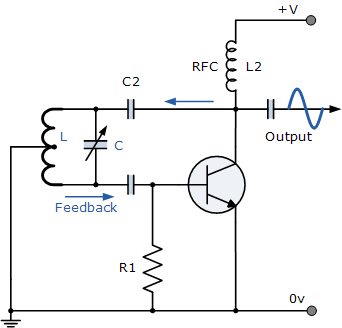





 My sister also has USB heated slippers
My sister also has USB heated slippers 

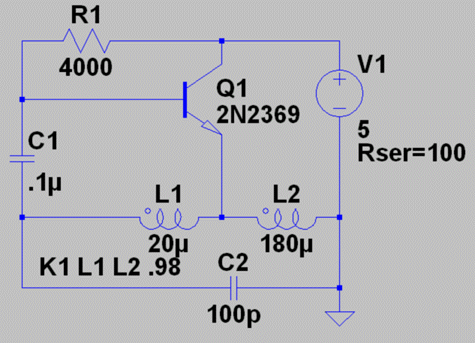
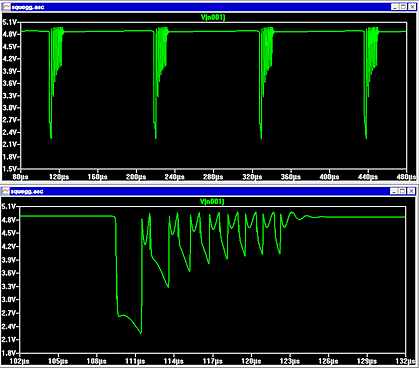
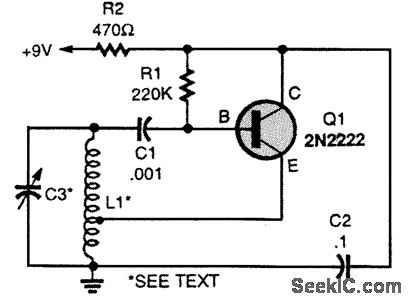
 :
: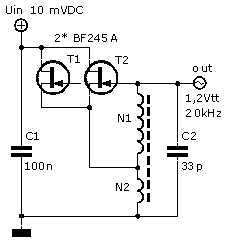
Comment